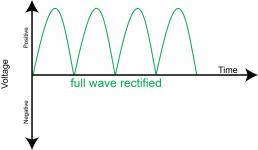I'm curious if there is any current present on the ground wire in the pool panel.
Just to be certain, there is not a bonding lug between earth and neutral in the sub panel causing an unbalanced load to travel through the sub panel and into earth via the pool handrail?
Is the sub panel from 2008 or newer and use 4 wires from the main panel?
Did you measure the current in your pool bonding wire or just the voltage?
I thought about this some more.Even if you have a perfect bonding grid, you can still get voltage differences if current is flowing.
For example, if you have a 100 foot solid copper wire and you have 10 amps of current, there is a potential difference from one end of the wire to the other end of the wire.
Even though both ends are perfectly bonded, they have a difference in potential.
Theoretically, a bonding grid could eliminate all voltage or potential differences if the grid was perfectly isolated from the environment.
However, in the real world, the grid is connected to the earth and to the grounding system and if voltage is applied anywhere, current will flow and there will be differences in potential from one place to another.
The potential differences are based on factors like the amount of current flowing and the resistance or impedance of the conductive pathways.
Just to be certain, there is not a bonding lug between earth and neutral in the sub panel causing an unbalanced load to travel through the sub panel and into earth via the pool handrail?
Is the sub panel from 2008 or newer and use 4 wires from the main panel?
Did you measure the current in your pool bonding wire or just the voltage?
Last edited:




